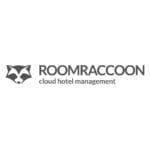Hotels have a wealth of data waiting to be analyzed, leading to insights to improve decision-making. In addition, bringing all the data into one system will enhance the insights about correlations between many variables to grow revenue and profits.
The most effective approach to commercial analytics is typically holistic, taking a cross-functional view of data and analytics. The method involves breaking down silos between departments and integrating data and insights from different areas of the organization, such as revenue management, marketing, sales, and operations. A holistic approach to commercial analytics allows hotels to gain a more complete and accurate picture of their business and to make better-informed decisions based on insights from across the organization. This approach also allows for more effective collaboration between different departments, as teams can work together to develop integrated strategies that consider the organization’s needs and objectives. Here is how a hotel can implement commercial analytics, starting with the definition.
What is commercial analytics?
In the hotel industry, commercial analytics involves analyzing data related to all revenue sources, hotel operations, and customer behavior to make informed decisions and optimize business performance. This can include various activities, such as analyzing sales and revenue data, tracking customer behavior and preferences, monitoring competitor pricing and performance, and optimizing marketing and distribution strategies. Some specific examples of commercial analytics in hotels include.
- Revenue Management involves analyzing sales and revenue data to optimize room rates and inventory to maximize revenue and profitability. This includes demand forecasting, dynamic pricing, and inventory optimization techniques.
- Customer Analytics involves analyzing customer data to understand preferences, behavior, and patterns. This can include analyzing data from loyalty programs, online reviews, social media, and customer transaction data to identify opportunities for upselling and cross-selling.
- Marketing Analytics involves analyzing data related to marketing campaigns and distribution channels to optimize marketing strategies and improve conversion rates. This includes analyzing website traffic, social media engagement, email marketing campaigns, and tracking the performance of online travel agencies (OTAs) and other distribution channels.
Commercial analytics in hotels is about leveraging data to improve business performance and drive growth by making informed decisions based on insights and data-driven strategies.
















